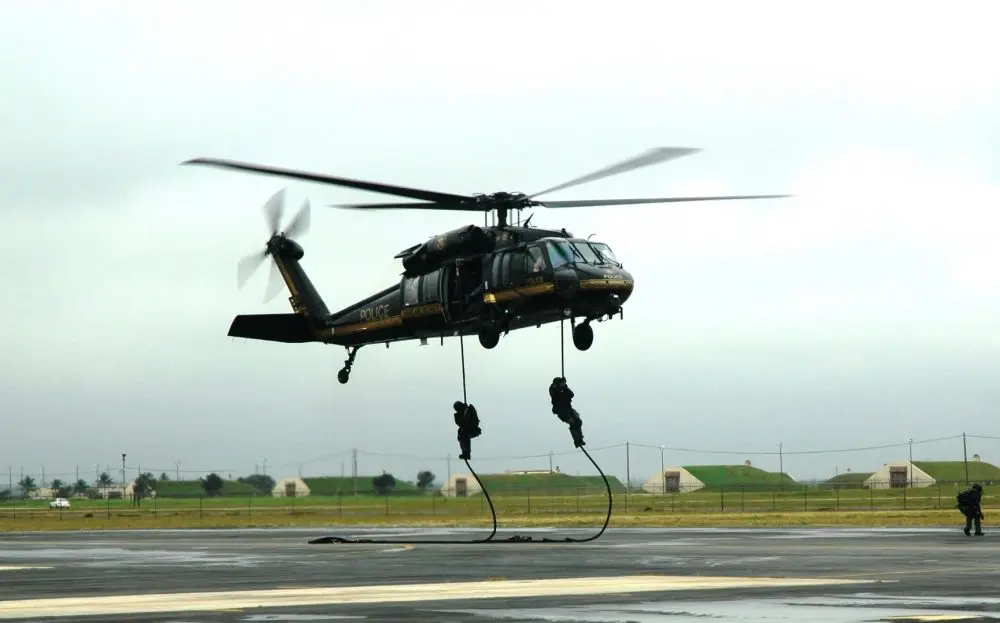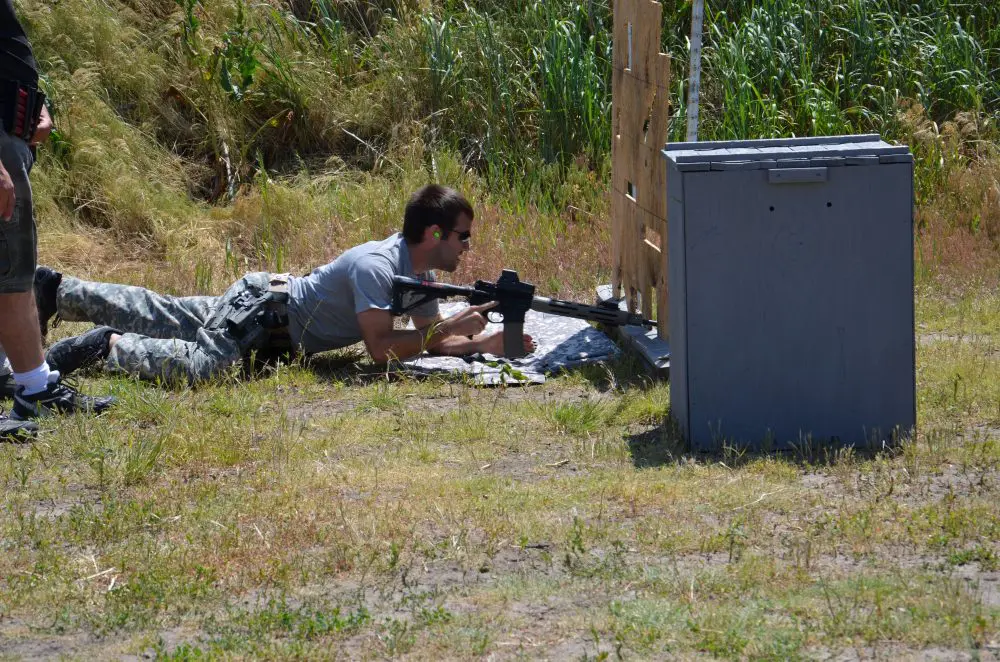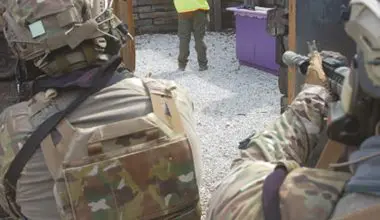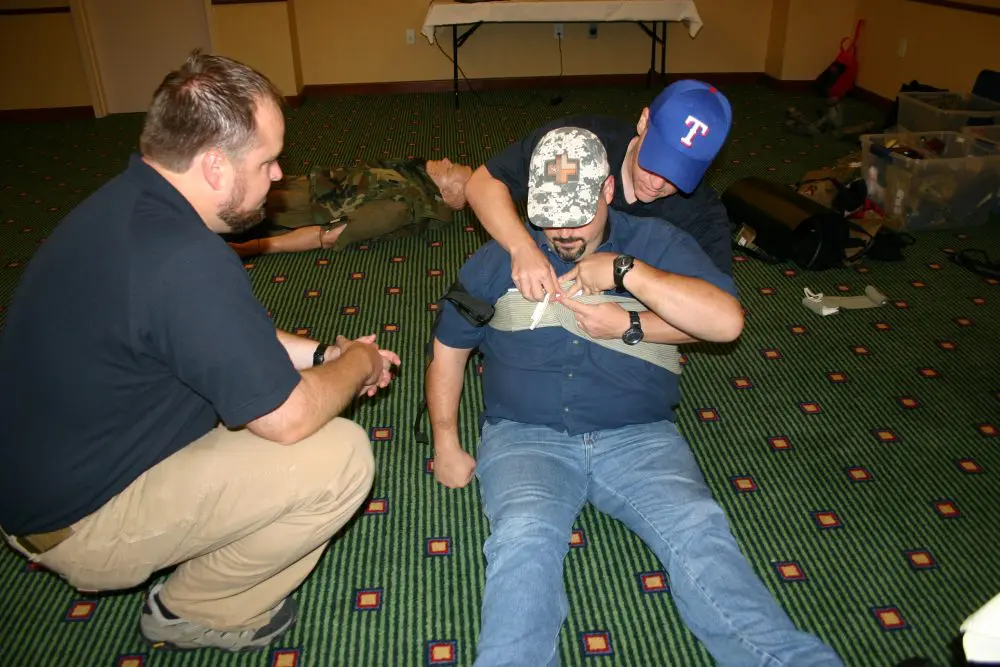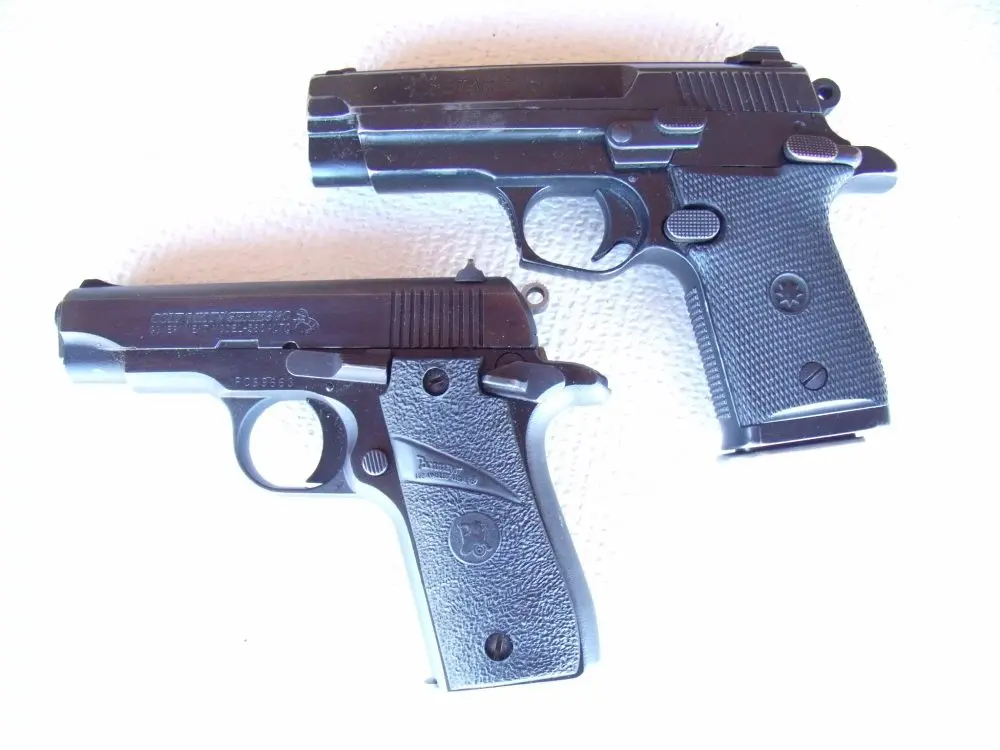Proficiency with a knife and your hands can in many ways be considered even more viable than relying solely on firearms, because they provide different options as various situations arise. Not every defensive encounter warrants a firearm. More importantly, a firearm may not be readily available either due to close distances or situational constraints such as finding yourself in a non-permissible environment for firearms.
Michael Janich’s Martial Blade Concepts (MBC) is a leading resource of knife (and open-hand) skills for responding to a close-range attack by an assailant armed with a knife or some type of contact weapon.
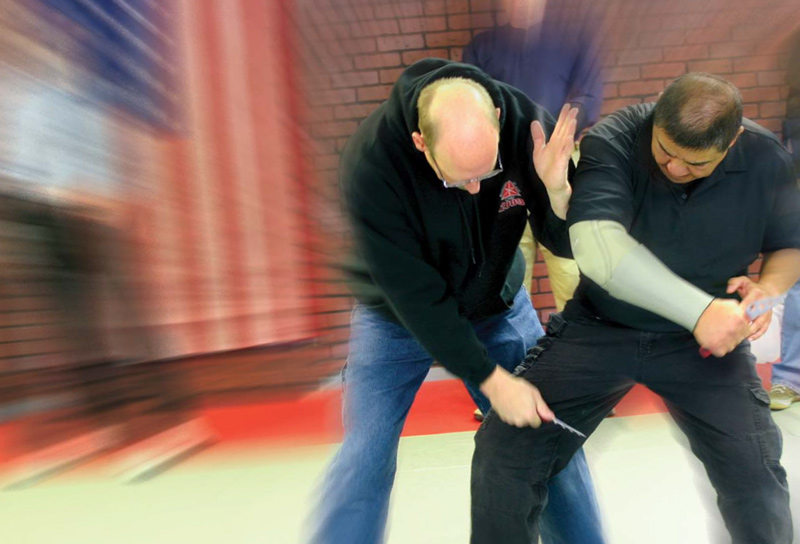
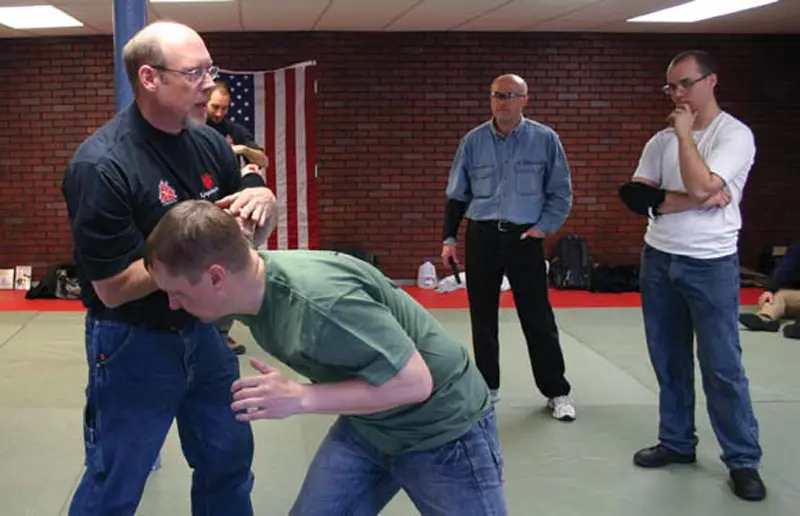
Table of Contents
PROGRESSIVE KNIFE SKILLS
The class started with step-by-step instruction in the fundamental skills of using a knife as a defensive weapon, including knife carry, high-speed deployment, recognition and identification of common street attacks, defensive responses, anatomical targeting, and the realities of knife stopping power.
Building on this foundation, it introduced progressive training methods and reflex training drills to accelerate skill development and combat reflexes. Also included was detailed instruction in MBC’s close-quarters reverse-grip system and the methods of adapting that system to improvised weapons, including kubotans, pens and tactical flashlights.
MICHAEL JANICH AND MBC
Who’s the man behind the blade? The following biography is from Michael Janich’s Martial Blades Concept website:
“Michael Janich has been studying and teaching self-defense and the martial arts for more than 30 years. He has earned instructor’s credentials in American Self-Protection (ASP – an eclectic art that includes elements of judo, aikido, boxing, fencing and French Savate), the Filipino art of Serrada Eskrima, and Joseph Simonet’s Silat Concepts, and is a member of the elite International Close- Combat Instructors’ Association. He has also trained extensively in wing chun gung fu, tae kwon do, wu ying tao, Thai boxing, arnis de mano and military combatives. Janich is also one of the foremost modern authorities on handgun point shooting and is one of the few contemporary instructors to have been personally trained by the late close-combat legend Colonel Rex Applegate.
“He is the developer of Martial Blade Concepts—a comprehensive program that covers all aspects of employing knives as personal defense tools—and Counter-Blade Concepts (CBC)—a highly effective system of defending against edged-weapons with emptyhand and improvised-weapon tactics. Janich’s MBC curriculum also forms a foundation of skill that is easily transferred to improvised weapons and empty- hand fighting skills, including his personal systems of Damithurt Silat and Sobadiwan Eskrima.”
Mike describes Martial Blade Concepts as “An edged-weapon training program specifically designed to meet the needs of today’s concerned citizen and armed professional. It is based on extensive analysis of the Filipino martial arts and many other systems, and emphasizes the development of ‘all-purpose’ defensive skills. Rather than learning a large number of specific techniques to defend against specific attacks, MBC focuses on perfecting a few proven techniques and learning how to apply them to literally hundreds of different defensive situations.”
I had met Mike previously at an industry seminar, but this was my first opportunity to train with him.
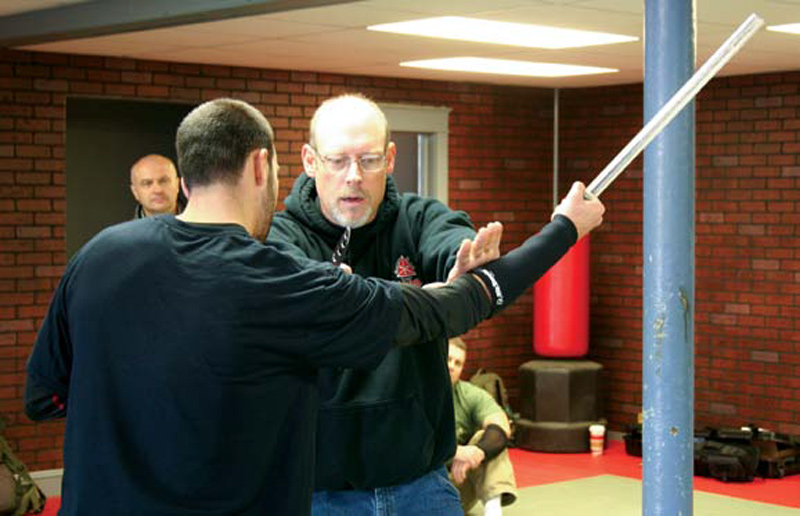
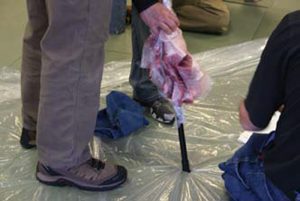
DOWN TO BUSINESS
Janich’s demeanor and mastery of the subject were evident from the beginning of the course. I was drawn to his methodology by its practicality and applicability to real-world situations. His easy manner and clear instruction style, including fluid demonstrations when introducing a method or tactic, allowed for quick assimilation of material.
After multiple demonstrations and a question/answer period, students paired up for application training as Mike moved around observing and tweaking movements. Students were encouraged to train with the type of knife they would normally carry and deploy. This meant folding trainers were the norm, not 5- to 6-inch straight blades shoved artificially in pants pockets or belts. This common-sense approach resonated with me. And the class proved that very little capability is surrendered using a practical folding knife, especially considering the ability to discreetly carry and deploy a folder in environments where a fixed blade or gun might be illegal, against employer policy, etc.
Spyderco Inc. training knives dominated the 17-student class and were the blade types utilized by Mike. His fulltime position with Spyderco Inc. made this an obvious decision for him, though after spending time with him, I have no doubt that if better options exist, he would be using them.
I realized listening to Mike and other students that knives are just as individual a decision as choosing a handgun for personal defense. However, Spyderco’s domination among the students was a positive reflection on the company that originated the tactical folder era with the one-handed opening feature.
TRAINING KNIVES
I utilized a Spyderco Delica 4 and Endura 4 Emerson trainers in an effort to mirror the same knives I use for everyday carry. The Delica has a 2 7/8-inch blade and the Endura a 3 ¾-inch blade. Popularized and patented by Ernest Emerson of Emerson Knives, the opening feature is a hook curving out the blade’s spine that catches the edge of your pants pocket when you draw the knife. It quickly opens the knife blade so it’s locked and ready to use.
If for some reason the Emerson hook is not engaged properly from the pocket, the familiar Spyderco 13mm hole for one-handed opening is present. This allows the Spyderco Emersons to still serve in the same manner as the traditional Spyderco folders. The fact that there is a learning curve in using the Emerson opening feature (or any other, for that matter) makes this trainer applicable. Gaining proficiency in safely handling and opening an Emerson folder comes through repetitive practice.
Delica and Endura Emerson Opener Trainers are identically sized, proportioned and weighted replicas of their “live” counterparts sans a sharpened edge and point. Mike stressed the importance of considering if a trainer is available in the decision-making process of choosing a knife for personal-defense carry.
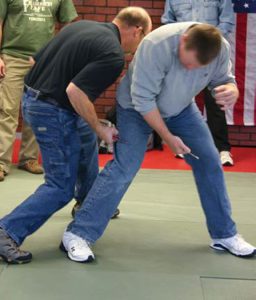
BRING OUT THE PORK ROAST
During the course, Mike did a demonstration involving a bone-in pork roast butterflied around a broom handle, wrapped in plastic and covered in up to eight layers of denim. A Spyderco Delica 4 was chosen due to its compact size in an effort to make a point about knife effectiveness—no pun intended. With minimal effort, Mike proceeded to slice and dice the pork roast, illustrating how effective a knife the size of the Spyderco Delica truly is when combined with MBC’s targeting system and a bladesman educated in its proper use.
Janich constantly stressed the realities of using a knife as a personal-defense weapon and the MBC approach to achieving decisive stopping power with a blade. In simple terms, you must accept the fact that the knife you will be using will be a small, legally permissible blade. You must also understand that using a small blade to target your attacker’s torso or neck to disable him through blood loss, shock or damage to vital organs is a slow, indirect and extremely inefficient approach that leaves you exposed to danger for an unacceptably long period of time.
The quickest and most efficient way to stop your attacker with a knife is to stop the specific body parts that allow him to be dangerous to you. This is accomplished by cutting the structures that instantly disable those body parts, like muscles, tendons and nerves. Mike’s pork roast demonstration dramatically supported his contention that it is the person wielding the knife and not the size of the knife that matters.
STRUCTURAL STOPPING POWER
MBC takes this fundamental tactic of structural stopping power, also known as biomechanical cutting, and expands it. Based on detailed analysis of human anatomy and physiology, Mike has determined which body parts allow an attacker to pose a threat and are most vulnerable to cuts with a typical tactical folder. He then validated this analysis by cross-referencing it with actual combative incidents involving knives, as well as industrial and home accidents involving serious disabling cuts. The result is MBC’s stoppingpower- oriented system of defensive knife tactics.
MBC selected three target priorities based on the principles of human anatomy. These targets are the inside of the wrist, the bicep and triceps of the upper arms, and the ultimate “mobility kill”—the quadriceps muscle at the front of the thigh. In addition to offering predictable and reliable debilitating effects, these targets were selected based on the fact that they can be easily and effectively targeted with a small knife.
The logic of MBC’s common-sense structural targeting is irrefutable. Think about it: your opponent literally extends these targets toward you when he attacks. Compared to traditional targets like the torso, this makes them much easier to hit. Some critics of structural stopping claim that it requires surgical precision, but if you compare the surface area of MBC’s arm and leg targets with the torso and neck targets the critics recommend, you’ll see that there really isn’t much difference in size. The key principle of MBC’s structural targeting is that when the targets are cut, people stop. The bottom line is that killing with a knife is vastly different from stopping an attacker with a knife.
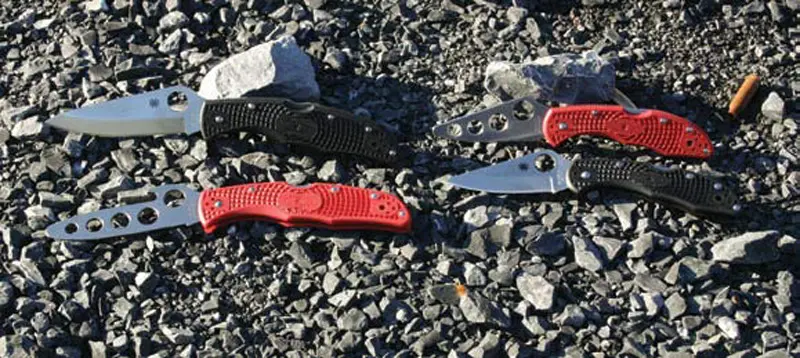
DEFENSIVE RESPONSES
Much of the training involved ingraining reflexive responses to the most common attack angles and directions. MBC identifies attacks by categorizing them into “zones” based on our natural range of motion. Once students understand how to identify attacks, they learn the four basic defensive actions of MBC. All defensive responses are based on the Filipino concept of “defanging the snake”—attacking the opponent’s offensive limb to instantly destroy his ability to grip or wield his weapon without necessarily having to endanger his life.
The defensive responses include the pass, follow, meet, and crossada.
A pass is performed by evading the strike and simultaneously cutting the opponent’s weapon-wielding wrist or forearm as it passes.
The follow also relies on evading the strike, but the counter is delivered after the opponent’s hand crosses your centerline and follows the same direction of movement of his strike, typically targeting the triceps to destroy elbow mobility.
In confined quarters or on slippery surfaces, you may not be able to use footwork to evade a strike. In these circumstances, a meet is most appropriate. A meet is a direct cut to the wrist or forearm of the weapon arm, immediately followed by a block or check with the back of the “live” (non-weapon-wielding) hand.
Crossada, a Filipino term that means “to cross,” is a tactic similar to a pass, except that the force of the cut is amplified by using the live hand to push or slap the attacker’s hand into the blade. This greatly increases the power of the cut and forces the attacker to overextend his movement, leaving him open to a follow-up strike.
MOBILITY KILL
Using the defensive responses as a foundation, students in the class learned to defend against attacks at various angles and quickly deliver follow-up cuts to other targets. The ultimate goal of all tactics was a mobility kill—a deep puncture/pressure cut technique called a Comma Cut administered to the attacker’s quadriceps. By destroying his ability to support weight on that leg, the attacker is disabled and you can create distance and the opportunity for escape.
This happens in far less time than it takes to write or read about, especially since the “chambering” or positioning during the flow of the action produces fluid, efficient movement with only minimal practice.
SUMMING UP
Attendance in a two-day course is not going to turn you into Mike Janich with his decades of experience. However, as Mike puts it, if you come away with only a handful of techniques and the confidence to use them with conviction, you’re on your way.
I will say that a couple of days spent with Mike produced better results than most other training I have participated in, whether it was firearms or combatives centered. This is a compliment to Mike as an instructor and to the wellthought- out Martial Blade Concepts system he has developed.
